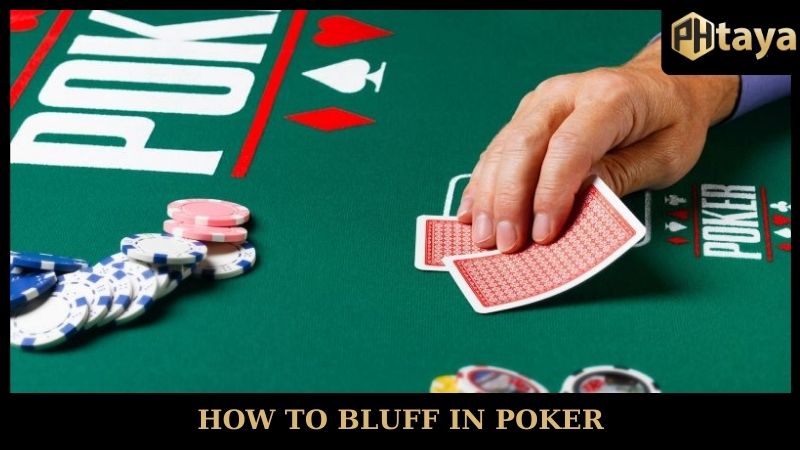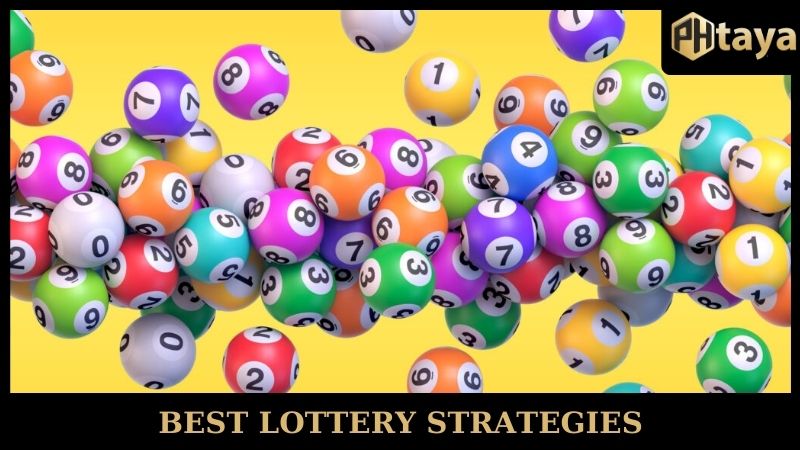Bluffing is an essential skill in poker that can turn an average player into a strategic master. Knowing how to bluff in poker effectively allows you to deceive opponents, control the game, and maximize your winnings. Whether you’re a beginner or an experienced player, learning the art of bluffing will give you a competitive edge. In this guide, we’ll break down the best bluffing strategies, common mistakes to avoid, and how PHTAYA can help you refine your poker skills. Get ready to take your game to the next level!
What is bluff in poker?
Bluffing is one of the most powerful strategies in poker, allowing players to win hands even with weak cards. It involves making opponents believe you have a stronger hand than you actually do, forcing them to fold and giving you the advantage. Bluffing requires confidence, strategy, and a deep understanding of your opponents’ behavior.
So how to call a bluff in poker? In this game, bluffing can be classified into different types:
- Pure Bluff: A bluff made with a completely weak hand, hoping the opponent folds.
- Semi-Bluff: A bluff with a drawing hand that has potential to improve.
- Opportunistic Bluff: A bluff used when opponents show weakness.
- Continuation Bet Bluff: A post-flop bet made after raising pre-flop to maintain aggression.
Bluffing is a high-risk, high-reward strategy. When executed correctly, it can significantly improve your poker success rate. However, mastering bluffing is not just about playing aggressively; it requires a mix of observation, patience, and psychology to succeed consistently.
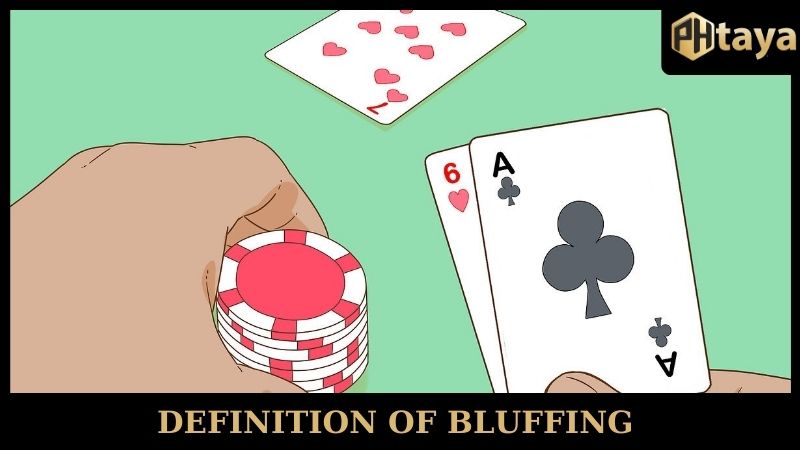
How to bluff in poker – new experience for players!
Mastering how to bluff in poker requires skill and timing. Here are essential techniques to learn how to bluff well in poker:
Read your opponents
First tip of how to bluff in poker is reading other minds. Understanding player tendencies is key to successful bluffing. Identify which opponents are cautious and likely to fold versus aggressive players who might call your bluff.
- Tight players: More likely to fold, making them ideal targets.
- Loose players: Tend to call more often, making bluffing riskier.
- Experienced players: Harder to bluff, as they can read bluffs well.
Reading opponents is not just about their playing style. Pay attention to body language in live games, betting patterns, and reaction times. A nervous hesitation before calling could indicate uncertainty, making them a good target for a bluff.
Choose the right moment
Second, to learn how to bluff in poker, you have to choose the suitable time. Bluffing should be done in optimal situations, such as:
- Against fewer opponents: Bluffing is more effective in heads-up or small group situations.
- On scary boards: If the community cards suggest strong hands (e.g., three of a kind, flush possibilities), opponents might fold.
- When you have a solid table image: If you’ve played tight and shown strong hands, opponents are more likely to believe your bluff.
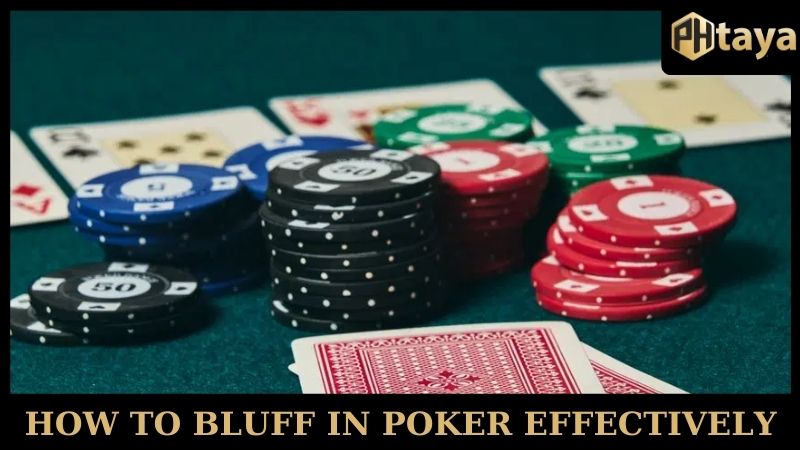
In addition, consider the game stage. Bluffing early in a tournament or cash game can be risky, as players are more likely to call. Bluffing in later stages, when blinds are high, can be more effective as players tend to protect their chips.
Control your betting patterns
To know how to bluff in poker, you have to understand how to control yourself. A good bluff should be convincing. Keep your betting consistent with how you would bet with a strong hand. A sudden, unusual bet size might reveal your bluff.
- Small, confident bets: Indicate strength and can force opponents to fold.
- Overly aggressive bets: Can backfire if opponents suspect a bluff.
- Check-raise bluffing: A deceptive move where you check first to induce a bet, then raise to scare opponents.
Use position to your advantage
Taking advantage of position is a tip to learn how to bluff in poker. Bluffing works best in late positions, where you have more information about your opponents’ actions. This allows you to make better decisions on whether to bluff or not.
- Early Position: Bluffing is riskier as you act first with little information.
- Middle Position: A balanced approach; can bluff selectively.
- Late Position: Ideal for bluffing as you see how others react first.
Mix up your playstyle
Avoid becoming predictable. If you bluff too often, opponents will call your bluffs. If you rarely bluff, they won’t fold when you try it. The key is balance. Additionally, incorporate semi-bluffs. Semi-bluffing with a hand that has potential to improve (like a flush draw) adds another layer to your strategy.
Way to learn how to bluff in poker
Improving your bluffing skills requires practice and observation. Here are the best ways to learn how to bluff in poker:
- Study professional players: Watch how top players bluff in live tournaments or online games. Analyze their timing, bet sizing, and opponent reactions.
- Play online poker: Practicing on platforms like PHTAYA allows you to refine your bluffing strategies in different situations.
- Review your hands: Analyze past games to see where your bluffs succeeded or failed. Adjust your strategy accordingly.
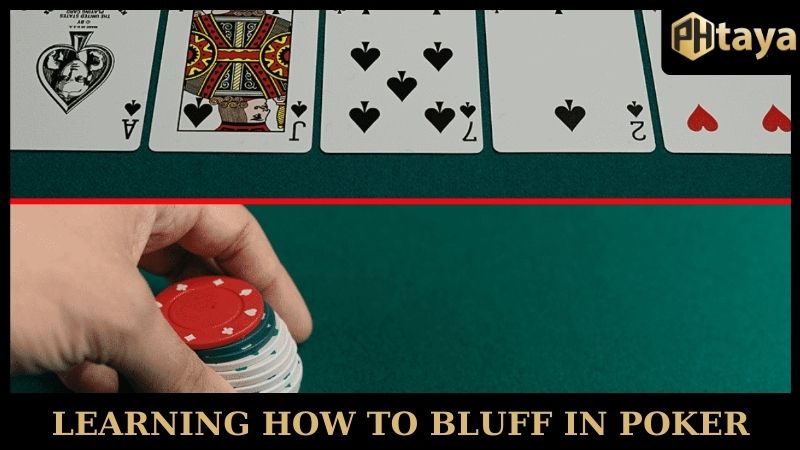
- Participate in poker forums: Engaging in poker communities helps you learn from experienced players and discuss bluffing strategies.
- Train with bluffing drills: Use poker training tools and AI simulations to practice bluffing in various scenarios.
Explore the world of poker with PHTAYA
PHTAYA is the ultimate platform for poker enthusiasts. Whether you’re a beginner or an experienced player, PHTAYA offers everything you need to elevate your game.
| Feature | Benefits with PHTAYA |
| Live Poker Games | Play against real players in high-stakes games. |
| Advanced AI Training | Improve bluffing skills with AI simulations. |
| Secure Transactions | Safe deposits and withdrawals for a seamless experience. |
| Multiple Game Modes | Enjoy cash games, tournaments, and sit-and-go options. |
| 24/7 Support | Professional assistance whenever you need it. |
| Exclusive Bonuses | Get exciting rewards and promotions. |
| In-Depth Poker Tutorials | Learn advanced poker strategies, including bluffing techniques. |
| Mobile Compatibility | Play poker anytime, anywhere on your mobile device. |
With PHTAYA, you can develop your poker skills, master bluffing techniques, and enjoy a premium gaming experience.
Conclusion
Bluffing is a crucial skill in poker that can turn an average player into a formidable competitor. Understanding how to bluff in poker involves reading opponents, picking the right moments, and executing well-timed bets. By practicing regularly and using trusted platforms like PHTAYA, you can sharpen your bluffing strategies and gain a winning edge in the game. Join PHTAYA Casino today and take your poker skills to the next level! Whether you’re playing for fun or aiming to be a professional, mastering bluffing will give you an advantage at the poker table.

